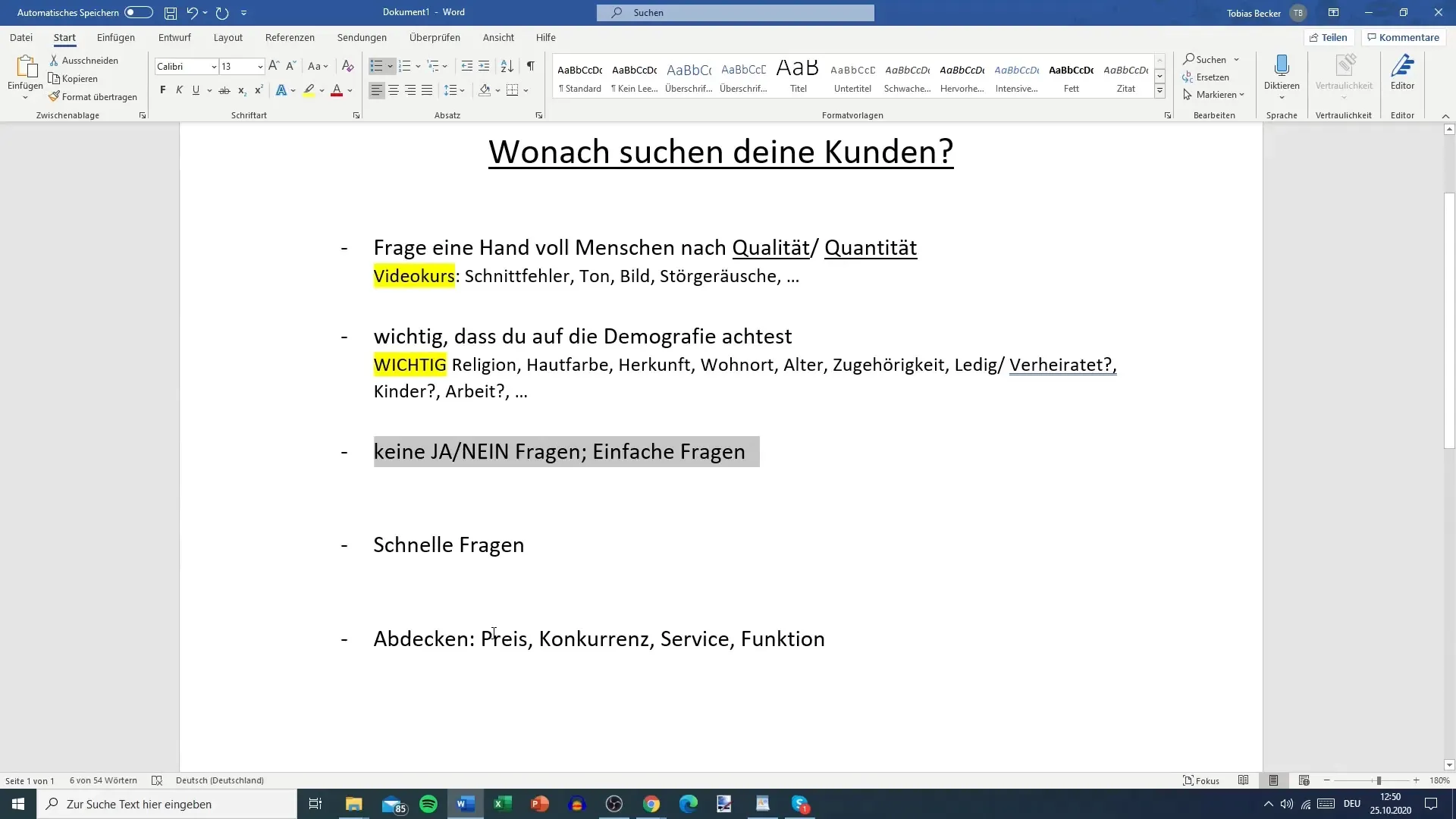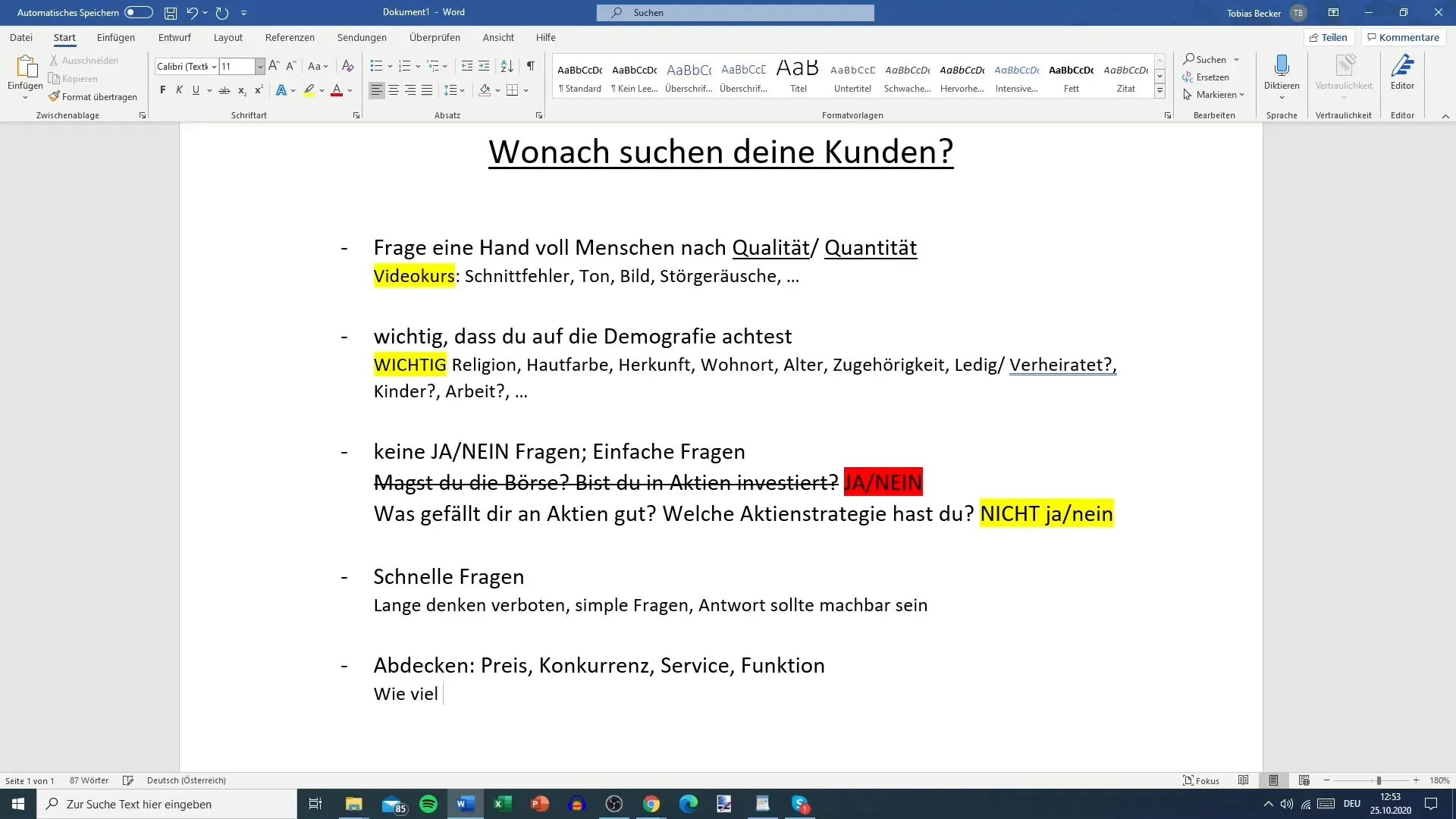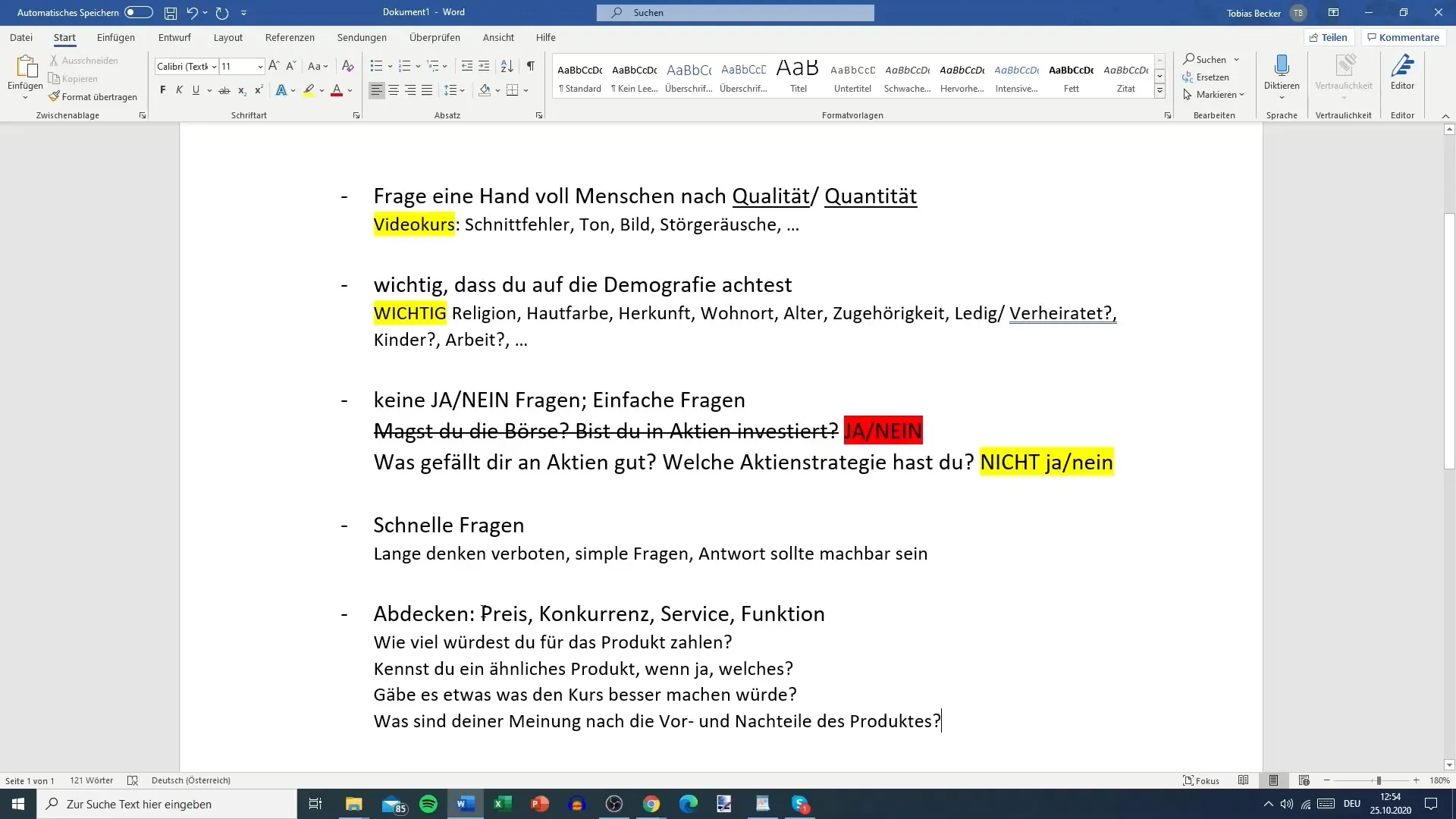The search for your customers' needs is fundamentally important for the success of your product. A clear understanding of what your target audience is actually looking for can help you tailor your offering and develop targeted marketing strategies. This guide provides you with a practical roadmap to gain insights into the wishes and preferences of your customers through targeted surveys.
Key Insights
- Customer feedback is crucial for optimizing the quality and quantity of your product.
- The demographic analysis of your respondents can provide valuable information.
- The design of the surveys should include clear and precise questions that allow for differentiated feedback.
Step-by-Step Guide
First, it makes sense to consider some fundamental thoughts. Before you begin the survey, you should think about which target group you want to address and what specific feedback you need.
Step 1: Gather Feedback
To ensure that your product truly resonates, take a direct approach. Give your product to a handful of individuals who potentially belong to your target audience. Make sure that these people are not from your direct circle of friends, as this can affect the authenticity of the feedback.

Ask the testers about the quality and quantity of your product. It should be clear that not every product is suitable for everyone — feedback is essential here. Think about how many units of your product would be sensible in a particular context.
Step 2: Evaluate Quality and Quantity
Quality is paramount. Make sure that respondents provide feedback not only on the quantity but also on the quality of your product. The more diverse opinions you receive, the better adjustments you can make based on multiple perspectives.
It is advisable to survey a larger group of at least 20 people to create a broad base of opinions. Ensure that the feedback givers bring different tastes and preferences.
Step 3: Collect Demographic Information
A careful analysis of the demographic data of your respondents is crucial. Ask about factors such as age, gender, background, and other relevant characteristics. This information will give you insight into which groups may be more or less interested in your product.
Example: If you are developing a product primarily aimed at young adults, it may be irrelevant to seek feedback from individuals over 60. Demographic data helps you gather the right feedback.
Step 4: Formulating Questions
One of the most important rules when creating surveys is to avoid yes-no questions. This type of questioning often leads to less insightful answers. Instead, you should formulate open-ended questions that allow for detailed feedback.

Instead of asking “Do you like the product?”, ask: “What do you particularly like about this product?” – this type of question yields much more valuable information.
Step 5: Speed of Responses
Ensure that your questions are easy and quick to answer. Complex questions that require significant thought might lead your respondents to abandon the survey or provide inaccurate answers.
A good example of quick questions could be: “How much would you pay for this product?” – this question is simple and clearly understandable.
Step 6: Covering the Right Topics
Your survey should focus on four main points: price, competition, service, and features.

Ask questions like: “What similar product do you know?” or “What additional features do you wish for?” These questions help you better align your product with the needs of your target audience.

Summary - Guide to Customer Surveys - What Are Your Customers Looking For?
Identifying the needs of your customers is the foundation for developing successful products. Ensure that you obtain high-quality feedback and formulate your questions accordingly to achieve the best results.
Frequently Asked Questions
How many people should I survey for my feedback?It is recommended to survey at least 20 people to obtain high-quality feedback.
What are yes-no questions, and why should I avoid them?Yes-no questions often lead to superficial answers. Open-ended questions provide deeper insights.
What demographic information should I collect?Age, gender, background, and similar factors that are relevant to your product.
How many questions should be included in my survey?Five to ten questions are ideal for obtaining concise and focused responses.
How can I help my customers respond faster?Ask simple and clear questions that are quick to answer.


